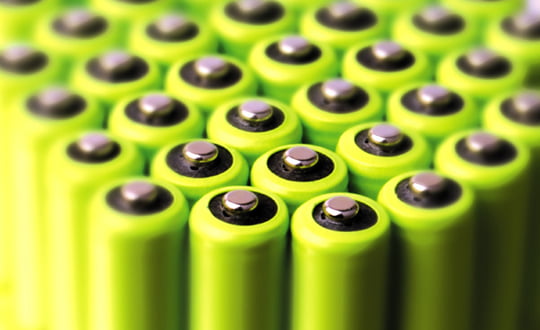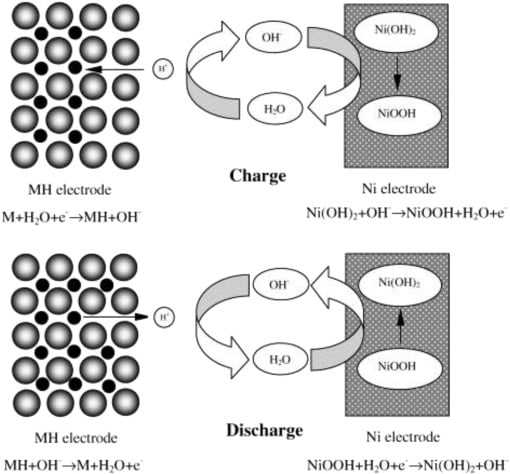
Fiber size
The pore size of nickel fiber mat has a great influence on the filling performance of the active material. If the pore size is too small, the active material is not easy to fill. And then the active material only concentrated on the surface of the electrode, but not filled inside. If the pore size is too large, the active material will piled up seriously. It will increase the internal resistance of the electrode and reduce the utilization rate of the active material. It will have a negative impact on the performance of the electrode. Due to the different methods of active material filling process in each production plant, the requirements of pore size are different. The electrode prepared by nickel fiber mat can be effectively controlled by the formulation of different filament diameter fibers.
Generally speaking, in the same unit weight (mass per unit area), the thicker the fiber filament diameter, the larger the aperture size, according to which. The filament diameter size can select to lay the felt that meets the requirements according to the aperture size. When using -φ10 μm nickel fiber, the aperture size is -φ120 μm; when using -φ40 μm nickel fiber, the aperture size reaches nearly -φ700 μm.
The unit weight also has a certain effect on the pore size of nickel felt, with the same filament diameter . And thickness, as the unit weight increases, the fiber pore size becomes smaller.
The pore size of the fiber becomes smaller with the increase of the unit weight at the same filament diameter and thickness.

Porosity
The size of nickel felt porosity is an important index affecting the performance of the battery, and the electrode with high porosity can carry more active substances and improve the volumetric specific energy of the battery. And the porosity of nickel fiber mat can reach 95%-98%.
The fiber filament diameter has little effect on the porosity of nickel felt. The porosity of the fibers with the filament diameter of φ10μm to φ40μm rate can reach 94.9%~96.8% level.
The effect of unit weight on the porosity of nickel felt is: with the increase of unit weight, only the natural thickness of nickel felt increases, while the porosity change is not significant.
The change in porosity was not significant. The experimental data are that when the unit weight increases from 300 g. m-2 to 600 g. m-2. The pore size of the nickel felt increases. m-2, the porosity only decreased from 95.8% to 94.8%.
The thickness of nickel fiber mat also has some influence on the porosity, under the same single weight condition. The smaller the thickness, the smaller the porosity. The smaller the thickness, the smaller the pore rate, for a single weight of 400 g. m-2 to 480 g. m-2. m-2 to 480 g. m-2. The thickness of the nickel fiber felt is controlled to be within the range of 400 g. m-2. The thickness is controlled at about 1.5 mm, which can maintain high porosity. For the nickel fiber mat with a single weight of 400 g. m-2 to 480 g. m-2, a thickness of about 1.5 mm can maintain high porosity.
Specific surface area
Nickel fiber mat has a remarkable performance characteristic. It has a large specific surface area, the actual test data. The actual test data can reach 5×104 cm2.cm-3~2.0×105 cm2.cm-3.
This is mainly determined by the characteristics of the preparation process of nickel fiber mat
The drawn fibers themselves have a large surface area. and the fibers laid into a net, forming a network structure with a uniform lap knot.
The fiber filament diameter and unit weight have some influence on the specific surface area. And as the fiber filament diameter becomes thicker and the unit weight increases. The specific surface area tends to decrease with the increase of fiber diameter and weight.
Tensile strength
At present, the big problem facing the development of NiMH batteries is that it is difficult to meet the needs of large-capacity, high-current batteries, bubble.
The problem of frothy nickel electrode breaking in the winding process seriously restricts the development in the direction of industrialization.
The nickel fiber mat sintered at high temperature has high tensile strength and flexibility performance.
In the pore size, porosity and other properties to meet the requirements
The nickel fiber mat does not pull off or deform during the winding process under the premise that the pore size, porosity and other properties meet the requirements.
The fibers in the sintered fiber mat lap each other, each fiber and several fibers welded together. The lap junction slightly fused, the entire fiber felt forms a complete conductive network, with excellent electrical properties, the specific resistance value is less than 25 mΩ.
Firmly bonded with the active material, not easy to fall off and drop slag. Sintering test Under the conditions of hydrogen, argon, etc., the temperature selected from 1,000℃ to 1,300℃. And the tensile strength tested up to 5 MPa~8 MPa.